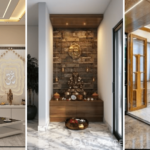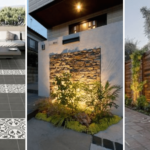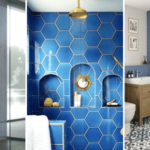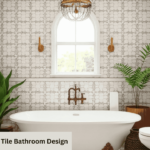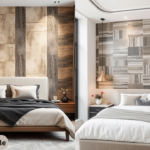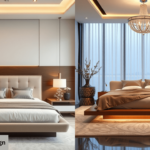
About Us
At our forefront, we redefine elegance and vibrancy in interior design. As prominent highlighter tile manufacturers, we specialize in crafting exquisite tiles that infuse spaces with captivating allure.
Latest Post
- Blog
- October 23, 2024
- Highlighter Tiles
- 11:56 am
10 Low Budget Modern 3 Bedroom House Design

For some people, building a modern 3 bedroom house design on a budget may be seen as a hurdle, but it’s actually something rewarding, and which can be done quite elegantly with creativity and a little planning. It is indeed possible to construct a beautiful and comfy house without spending too much money through smart choices. A cheap modern house does not necessarily mean that one has to compromise on taste, space, or comfort. It instead aims at resource optimization, cost-effective designs, and sustainable construction methods.
In this article, our goal is to look at some of the elements necessary in constructing a low-cost modern 3-bedroom house, including layout strategies, choosing the right materials, and even learning some interior design concepts that will make your house contemporary yet affordable.
1.Optimizing the Layout 3 bedroom house design
The first and most important phase of designing a home, or in this case, a low-cost 3 bedroom house design, is the layout. And it is important that for a low-cost house, the building plan is very direct and to the point. A well-constructed layout will not only aid in efficient usage of space but will also save on the construction budget.
I. Open Plan Areas
An open-concept floor design is one of the cost-effective features that construction reserves. It is achieved through a reduction of the number of walls and combining a 3 bedroom house design, dining room, and kitchen into one room. Not only do open floor plans increase the sense of spaciousness in the house, it also reduces the amount of building materials and cost on walls, doors, and various partitions..
II. Compact and Functional Bedroom
In designing for a low-cost 3 bedroom house design should be small but effective in terms of use. Pay attention to how every square inch is utilized. House a modern average size of bedroom that houses a bed out of a wardrobe, working desk or sitting area. First, don’t spend a lot on extra bedroom space. Second, use smart planning of how to use space, such as having a cabinet built in or storage areas under the bed.
III. Is there a central wet wall?
A good cost policy with regards to 3 bedroom house design is having the kitchen, bathroom, and laundry close to each other or on the same wall. This helps to minimize the extent of the piping required and thus the costs of labor. For instance, kitchen and bath juxtaposition will minimize plumbing intricacies and costs.
IV. Single Story vs. Two-Story
Single-story 3 bedroom house designs are cheaper to put up than staggering ones as they need fewer building materials mainly for scaffolding purposes. Creating views with an open-concept single story is a nice way to maintain low building costs while creating an illusion of space. Nonetheless, in instances where the lot is small and one has to cover more floor area, then a two-story may be cost-saving only if the plan can be kept uncomplicated.
2. Cost-Effective 3 bedroom house design
The selection of the materials dictates the budget, but it shouldn’t be at the expense of the modern look. There are a number of designs that look modern but can be produced at a reasonable expense including a number of materials.
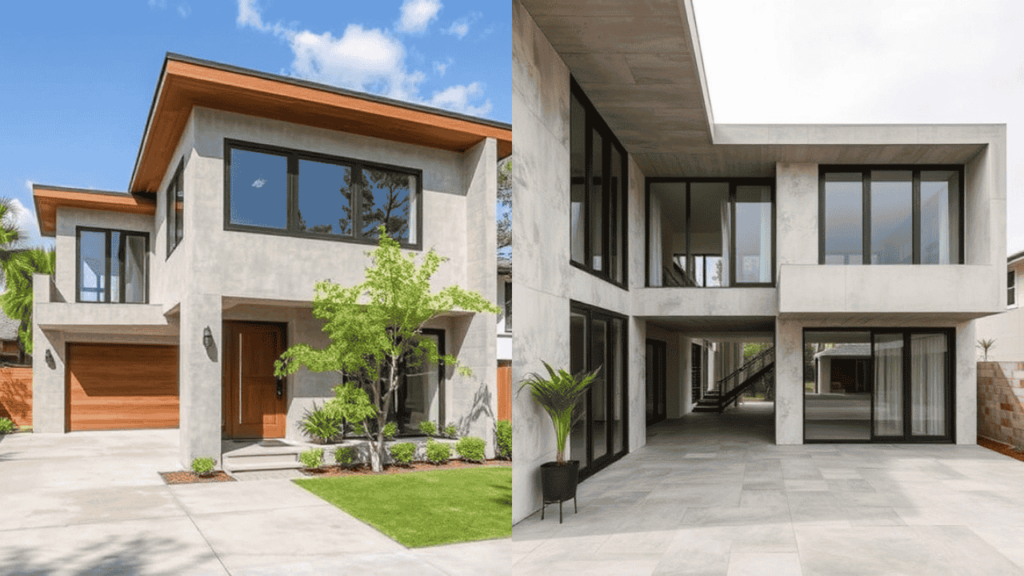
I. Concrete
Concrete is an appropriate material irrespective of application. In 3 bedroom house design, polished concrete floors considerably modulate maintenance and provide an appropriate surface for contemporary building aesthetics. While also cutting back on building expenses, concrete can also serve as many additional external finishes that further enhance the modern look of the building.
II. Reclaimed Materials
With regards to both, cost and the impact on the environment, using reclaimed or recycled materials must have benefits. To enhance a 3 bedroom house design aesthetic, reclaimed wood can be placed on floors, beams, or accent walls. Instead of incurring additional material costs, recycled bricks, steel or glass can also be used in the design of the house adding a unique feel to the house.
III. Prefabricated Components
Construction time and manpower can be greatly reduced with the use of prefabricated components of building houses, like roof trusses, walls, or even partial or complete buildings. Modular homes, which consist of sections that are manufactured elsewhere and then brought to home and designed, are another choice that can reduce costs while providing design versatility.
Ready-made materials are also easy to use because they cut back on the time it takes to construct a home while also ensuring that there is uniformity which is why most home builders on a budget prefer them.
IV. Vinyl Siding or Stucco
Vinyl siding as a construction material is attractive as it is not only affordable but also 3 bedroom house design looking and goes well with many contemporary designs. A particularly appealing choice that can be used in a primary role or as a complementary finish is stucco, which is cost-effective, smooth, and works nicely when combined with wood or metal. They are also both cost-effective in the long run due to being low maintenance.
3.Energy-Efficient 3-bedroom house design
The 3 bedroom house design features also have the potential to incorporate energy-efficient solutions which not only have a positive impact on the environment but also lower the energy bill in the long run. The environment is one of the main themes of many contemporary houses today and energy efficiency can be made attainable even on a tight budget by using the right interventions.
I. Natural Light and Ventilation
Careful and strategic planning of the 3 bedroom house design can heavily affect the amount of energy that is utilized by artificial lights. Bringing ample sunlight into a home to reduce artificial lighting can be achieved with large windows or skylights. Moreover, if windows and doors are strategically placed, they can provide adequate ventilation that can reduce the usage of air conditioning and ultimately the energy bills.
II. Insulation.
Installing appropriate insulation will help control heating and cooling costs. Even on a tight budget, there is a need to invest in insulation for the walls, the roof, and the floors in order to ensure a suitable temperature in the house and minimize the use of heating or cooling systems throughout the year.
III. Energy-Efficient Appliances.
When equipping a 3 bedroom house design with a kitchen and a laundry room, energy-saving appliances should be used. Energy Star-labeled appliances are worth purchasing because they use less electricity and water, and, therefore, offer potential savings on utility expenses. However, there is More, economical though, in the long run.
IV. Solar Panels.
While the cost of installing solar panels may be high, they are likely to enable considerable reductions in electricity expenditures in the long run. It would be reasonable to begin with a small system that allows you to run the most important devices and then add more when the funds become available. Solar panels are consistent with current trends and are beneficial to home value.
4. Minimalist Interior Design
Contemporary minimalist architecture fits the bill quite nicely when it comes to the overall cost of the project. Since the main emphasis in minimalist designs, would be on things, straight lines concepts, and absence of ornamentation, all this can be handy at little costs.
I. Balanced Color Scheme
A white, light gray, beige, and even black tone is frequently utilized within 3 bedroom house designs or minimalist homes. These colors are classic, make a room feel spacious, and are economically easy to apply. By painting the wall surfaces with light and neutral colors, it is possible to achieve an overall effect that makes the room look more spacious and open especially placing this in consideration in smaller areas which are space constrained.
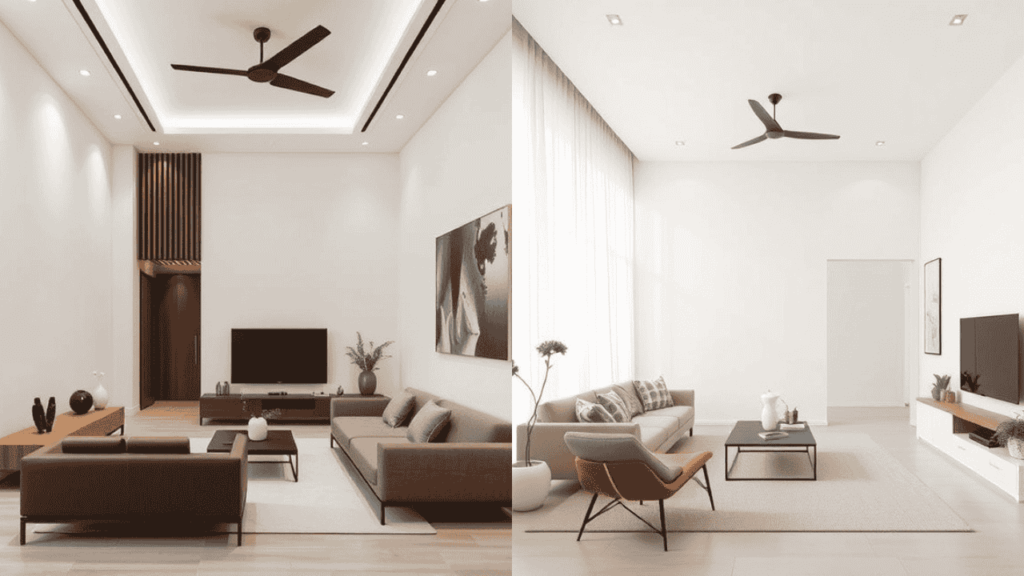
II. Low Profile Decorative Elements
Delivering your space with simple and useful furniture, which is, however, appropriate in size to that of the house is important. Rather than using too many decorative elements, it is important to emphasize a few functional items such as a table that can be converted into an office or a sofa that has storage space underneath. In 3 bedroom house design, the principle of ‘Less is more’ prevails. It may be more effective to use a few well-considered pieces than to clutter the space with too many existing decorative accessories.
III. Handmade Decorations
Decorate your 3 bedroom using painted objects and other DIY items so you do not have to spend much on the decors. You can make your own pictures to hang on the wall, indulge in the upcycling of previously used decorations or even go an extra mile and make your own shelves. In this way, including handmade pieces will add a new dimension as well as enhancing the aesthetics of the modern house at a reasonable cost.
IV. Open Shelving
When used in the kitchen and other living spaces, open shelving is an easier and cheaper storage solution that also remains true to a minimalist theme in the space. If cabinets are used as a storage solution, there is no need for them to be highly stylized when simpler shelves work to display dishes, books, or other ornamental objects. The use of open shelves makes the entire space feel light and roomy which is ideal for smaller homes.
5. Affordable Landscaping and Outdoor Spaces
A small 3 bedroom house design may be modest in terms of the interior but does not end inside the house. The outdoors is equally important as it contributes to the look and feel of the house. A few landscaping ideas need not be expensive to improve the appearance of the exterior of the house.
I. Low-Maintenance Plants
Opt for indigenous plants that do well in your area and do not require a lot of attention and care. Landscaping with succulents, ornamental grasses, or drought-resistant plants is suitable for a modern landscape and does not necessitate regular watering. Adding some plants or creating a basic flower bed provides greenery while not placing a significant strain on your finances.
II. Gravel or Concrete Pathways
If you can’t afford to build walkways made of stones or bricks, you can alternatively build gravel or concrete slabs to add modern and the simplest landscapes. These materials are cost-effective and long-lasting; also have a sleek and clean appearance which is best suited for modern houses.
III. DIY Outdoor Furniture
Build your own outdoor seating areas from cheaper materials like cheap wood pallets or anything upcycled. Adding a small wooden bench, an outdoor coffee table, or a hammock is a great way of transforming the backyard into a peaceful place at a very low budget.
Conclusion
Through meticulous preparation and prioritization of the essentials, one can say that designing a cost-effective modern 3 bedroom house design is completely possible. With effective space management, cost-effective material selection, energy-efficient construction methods, and simple designs, it is achievable to build an aesthetic and comfortable house without financial stress. A 3 bedroom house design does not mean wasting money on luxurious property instead it is a good intelligent design that maximizes the volume and other resources but remains moderately priced. By using these approaches, you will be able to realize your conception of the house of your dreams without over the budget.
